If you walk down the sidewalk in a new neighborhood in the Dutch town of Nieuwkoop at night, the pavement glows red. The neighborhood, a nearly-complete development of dozens of homes, happens to be next to a nature reserve home to threatened species of bats–and it’s the first in the world to install new bat-friendly street lights.
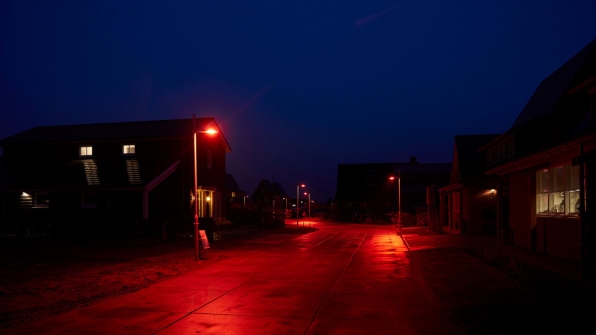
“Bats don’t see red light as particularly bright, if they see it at all,” says Maurice Donners, a senior scientist and innovation specialist at Signify, formerly known at Philips Lighting, which designed the new street lights. “So if you have certain bat species that are really avoiding light, we thought the obvious thing to do was take a portion of red light which is visible to us, but is much less visible, or perhaps even invisible, to bats.”
The company started developing the lights about a decade ago, and by 2012, began working with university researchers to run a large experiment to test different bat-friendly lights across the Netherlands. Data showed that a “light recipe” heavy on red light worked well, while white and green lights caused problems for bats.
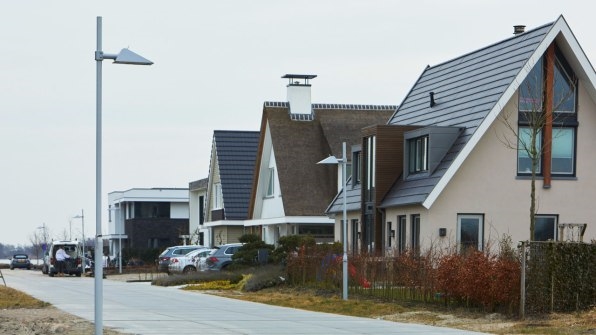
When the town of Nieuwkoop started planning to build 89 homes next to the nature reserve–one of a network of reserves across Europe that provide breeding and nesting sites for rare species–every aspect of the project had to consider the environment. “They got the building permits on the condition that they would do everything possible for the highest level of sustainability and especially not disturb the neighboring nature,” says Donners.
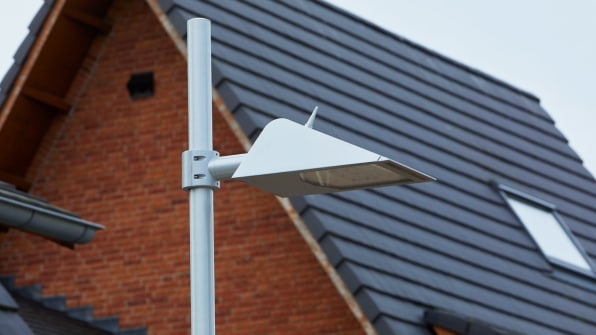
Since bats are nocturnal, bright lights have an impact on them. Bats that avoid light may be less active; other bats may be drawn to streetlights that attract insects, altering where the bats fly in an ecosystem. The red lights solve the problem of disturbing light-avoidant bats, and also don’t attract bugs. There’s some evidence that they also may be better for other nocturnal species, like mice.
For humans, Donners says the lights perform as well as typical LEDs–the brightness meets the same requirements for rural neighborhoods, and human eyes quickly adapt to the color. “We have a mechanism in our visual system which is much like the automatic white balance in a modern camera, which will tell our brains actually the lighting which you see is white,” he says. “So it will adapt your perception. After a couple of minutes, you won’t notice anymore that it’s really red.” A mix of a few other colors in the light, including a little blue and yellow, makes it possible to distinguish colors–for example, when you’re trying to find a car in a parking lot.
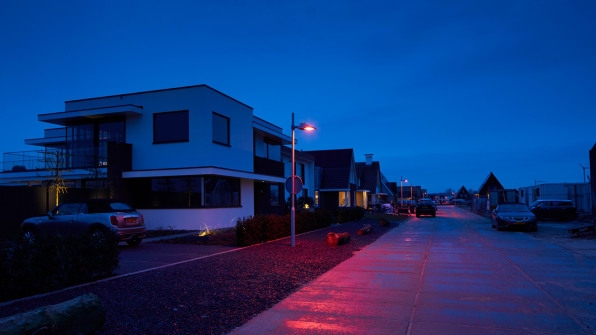
The lights are connected to a management system that can automatically adjust the brightness. The lights can be set to dim late at night, and brighten when an ambulance or fire truck drives by. The system can also automatically brighten lights when pedestrians or cyclists approach, though that function isn’t used in this neighborhood.
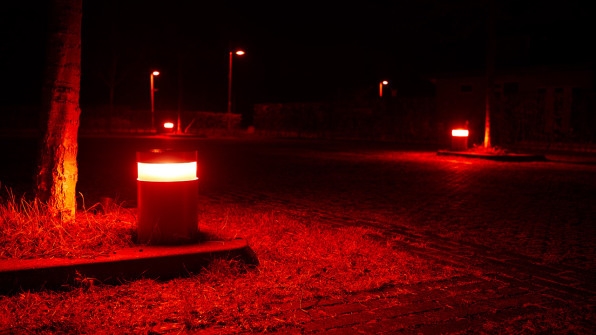
The company is also working on lights that can benefit other wildlife. Migrating birds, Donners says, typically aren’t disturbed by ordinary residential streetlights. But if an area is particularly bright and surrounded by darkness–for example, an oil platform in the middle of the ocean–that can make birds swerve off-course. Another light recipe, a blue-green color, in this case, can help birds. Signify plans to use those lights on an island off the Dutch coast in the North Sea, replacing the island’s entire public lighting system to help migrating birds. (The bird-friendly lights, notably, aren’t any better for bats than ordinary streetlights–there’s no solution for all species, yet, other than darkness.)
The new lights for bats likely only make sense in certain locations. “In a really big city center with lots of noise and traffic and all kinds of other irritating factors for bats, it might not be that useful to do something like this,” he says. “In areas where lighting is a predominant disturbing factor, and there is actually a reason to focus on bats and not on some particular other species, then this might be a good solution.”
(38)